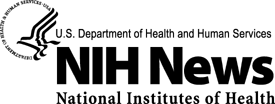 |
|
|
FOR IMMEDIATE RELEASE:
July 26, 2001 Council CONTACT:
Marcia G. Lawson (703) 741-5816 26 Jul 2001: Council and NIEHS Agree to $4 Million Research Effort to Improve Testing Chemicals for Potential Human Developmental and Reproductive EffectsThrough a Memorandum of Understanding (MOU) between the National Institute of Environmental Health Sciences (http://www.niehs.nih.gov) (NIEHS) and the American Chemistry Council (http://www.americanchemistry.com/) "On behalf of the members of the Council, I am proud and delighted to sign this MOU with the NIEHS," said Fred Webber, President and CEO. "Through this agreement we will jointly fund research grants to expand knowledge about the potential effects of chemicals on development." The signing ceremony took place today at the headquarters office of the American Chemistry Council. This MOU supports the joint use of Request for Applications (RFAs) -- the formal method by which the National Institutes of Health (http://www.nih.gov) NIEHS Director Dr. Kenneth Olden, said, "This RFA is a collaboration between government and industry to improve the health of the American people by improving the quantity and quality of the data on potential developmental toxicants that are available for use in the risk assessment process." Council scientist-representatives and NIEHS scientist-managers worked on the development of the joint program to benefit the public and formulated the initial RFA. Scientists from NIEHS and the Council's LRI will be involved in screening applications for responsiveness to the RFA prior to an independent, NIH scientific peer-review process. Following that process, applications ranked of the highest scientific merit will be offered funding. The concept of the MOU grew from interactions with NIEHS during a Council-sponsored workshop in February 2000 to identify research needs on reproduction and development. Based on the workshop, Dr. Olden and Dr. Carol J. Henry, Vice President, Science and Research and Co-Leader of the LRI, identified a mutual research goal: to conduct multidisciplinary research on the mechanisms of action of potential developmental toxicants using state-of-the-art tools, including genomics and genetic animal models. This research would follow-up on aspects of the National Research Council's evaluation of the Scientific Frontiers in Developmental Toxicity and Risk Assessment (http://books.nap.edu/catalog.php?record_id=9871) After senior-level agreement to pursue the MOU, NIEHS assigned technical leadership to Dr. Michael McClure and Dr. Jerry Heindel. The LRI team, led by Dr. Jacque Smith, ExxonMobil Chemical Company, also included Dr. Stuart Cagen, Shell Chemical Company; Dr. Ed Carney, Dow; Dr. Jeanne Manson, Thomas Jefferson University; Dr. Robert Kavlock, Consultant; Dr. Carol Henry, and Dr. Judy Graham, Senior Director and Senior Scientist, LRI. "Scientists from NIEHS and the Council, who worked on this agreement from concept to realization, share the objectives of fulfilling their institutional commitments to resolve many existing questions about the reproductive and development effects of chemicals," said Dr. Henry. "We expect this is the beginning of a long -- and mutually beneficial -- relationship with NIEHS and other federal agencies that also seek synergistic collaborations with industry," Webber emphasized. |
|


